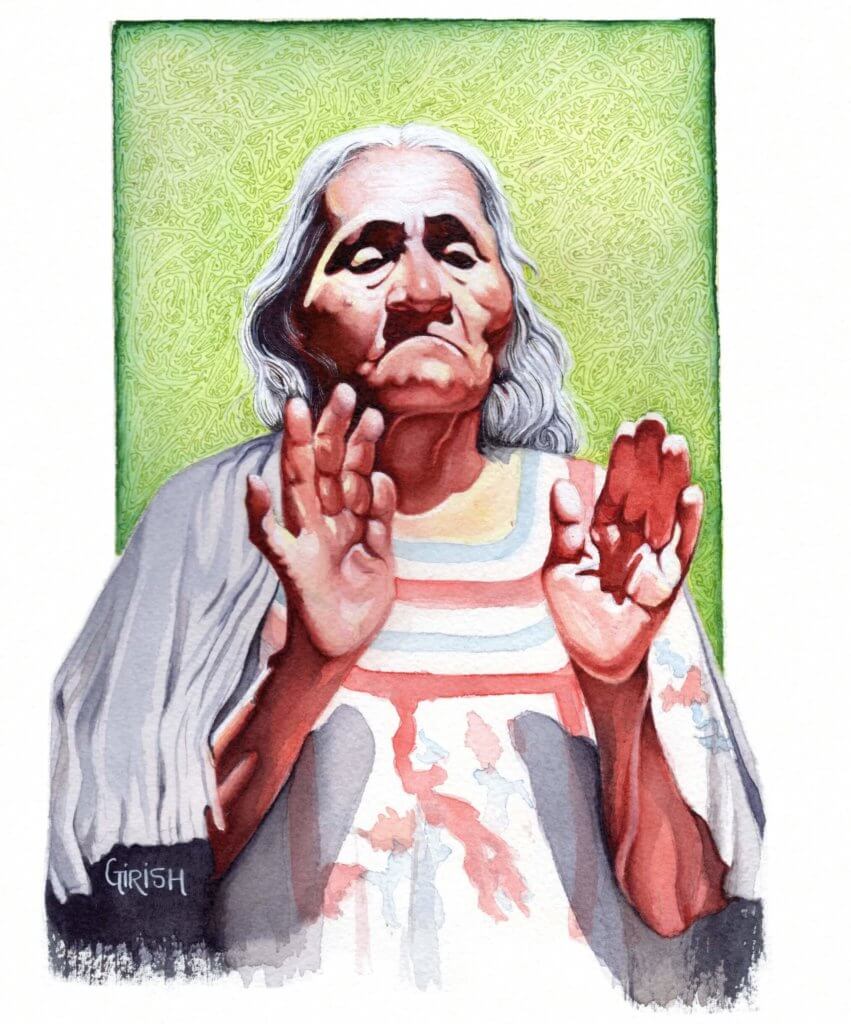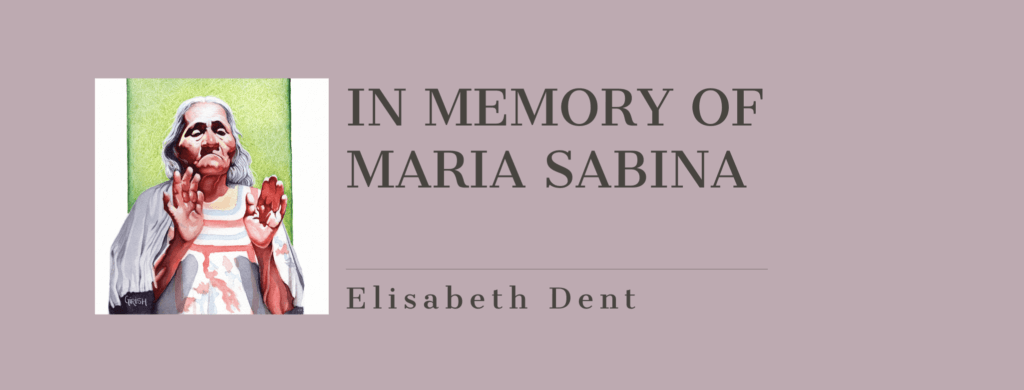Maria Sabina was a Mazatec mushroom healer, known as sabia or curandera, who became accidentally famous after conducting a ceremony for a foreigner. However, she had a captivating life long before being ‘discovered.’
Sabina was born in 1894, in Huautla de Jimenez, a small village in the province of Oaxaca, Mexico. Descended from a lineage of healers, known as curanderas, she first ingested psychedelic mushrooms when just eight years old. Sabina’s sick uncle wasn’t recovering. After ingesting the psilocybin producing mushrooms, the sacrament revealed which sacred herbs would heal her uncle, and where in the village they could be found.
Sabina cured her uncle of his illness and quickly gained notoriety in the village as a sabia or wise one. For decades she led healing ceremonies, known as veladas, using magic mushrooms seen as “holy children” by the Mazatec people, undisturbed by the western eye.
Sabina was already in her sixties, married three times and mother to several children when she met R. Gordon Wasson. In 1955, the American hobby mycologist and VP. at J.P Morgan Chase embarked on a three-year expedition in search of teonanacatl, the magic mushroom of Mesoamerican folklore. Wasson hoped for an encounter with the divine and it took many months to find Maria Sabina, living in a little hut in the secluded mountainous village.

Wasson believed the mushrooms Sabina used in her ceremonies were the same as those described in the legends, but her ceremonies were not intended for spiritual discovery. The Mazatec people had their own relationship with God and Sabina was a devout Catholic. The veladas were held purely for medicinal purposes, to purge illness and heal the sick.
Wasson feigned sickness to access Sabina’s ceremony and convinced the curandera to allow his team to photograph the experience. Although inducted by deception, the ritual gave Wasson an entirely new outlook on life. In 1957 he sent spore samples to Albert Hoffman and wrote this article in Life magazine, Cold War North America was never the same.
While the Life article never revealed Maria Sabina’s location, Wasson’s forthcoming books did – legend has it Sabina was subsequently visited by John Lennon, Walt Disney, and Aldous Huxley. With her intimate world thrust into the public domain; she was left unprepared and undefended against western hunger for spiritual enlightenment.
Soul seekers without a connection to the medicine came to pick the mushrooms and find God, with little to no regard to Sabina, the Mazatecs or the ecological implications of their voracious search for the truth. Unwittingly Wasson had elevated Maria Sabina to sainthood, while simultaneously destroying her entire way of life.
As a curandera, Sabina would never deny a request for help. However, some reports say visitors sought out the healer and even request she wash their clothes. Maria Sabina would eventually regret introducing Wasson to the sacrament and believed their power, and her relationship to that power, had been compromised through its exposure to the western world.
Eventually the village was ravaged by the influx of western psychonauts who had made the trip to tune in and drop out. This changed the delicate balance of Huautla de Jimenez, as farmers realized they could make more from the travelling hippies than agriculture. The community largely blamed Sabina for the upheaval and felt she was profiting from tradition, leading to the police being informed and the village raided for narcotics. By this time it was evident that the social fabric of the community was damaged beyond repair, Sabina was eventually run out of town. In time she was allowed to return and died there in 1985, at the age of 91.
It is encouraging in the psychedelic renaissance that discussions on Maria Sabina frequently address her spiritual, cultural and sociological significance, when botanical discoveries are often portrayed through a colonial lens. As efforts to decriminalize psilocybin gather pace, it is imperative Maria Sabina and indigenous healing modalities are remembered and regarded with respect. While her methodology appeared foreign in the context of western medicine, generational and ancestral knowledge constituted her peer reviewed studies. It is hubris for western society to believe that if something cannot be explained scientifically that it equates to folklore. What Sabina knew about her ancestral calling and the power of healing far preceded what modern scientists are just beginning to explore.


History is often read by those whom seek knowledge of the past. Real history is made by those with courage to change the future. It’s articles like theses that enlighten the spirit when read, and understanding the truth could also bring forth tears. Had it not been for the endurering work it takes to write ones story, and through illustration folks can see the wise ancient ones, or if someone is just making sure this story is made available to more readers like you and I,…..I simply want to say thank you, thank you so much for your forward thinking, and for your thoughtful consideration.
Oh my ~!~ … my heart aches in sensing the feelings that tie these words to an awareness that reflects the way we treat and relate to GRANDMOTHER GAIA … and … thank you Elisabeth and Girsh … when will we ever learn ………
In spirit, armand
Very thought provoking article. I hope that the “western influence” that robbed this tradition of its purity is not happening in the amazon now or with the plant medicines anywhere.
Well at least she was able to return to her hometown after all that! Imagine entitled hippies telling her to do their laundry! Unbelievable.
Highly interesting, thank you for that! 🙂
Wowwwww ! Made me want to go back in time…
Thank you so much for bringing light to this unjust act on the part of a society that should know better.
Thank you for this well written and informative article. I will share it’s important message.
Well written and gives pause for thought.
Fascinating and revealing piece.
What a tragic story!
Good article!
This article really highlights how the ritch and powerful take advantage of sacred traditional medicine. Then didn’t even bother to help compensate or even tell the public about their experience. Very well written and the painting Is beautiful.
I wonder if it’s for sale.
M
Dear Mike,
thank you for your kind words. Yes, the original Piece is available for purchase. You can Write to me at girishchandok@hotmail.com for enquiries.
Thank you ????
Girish
Very well written Elizabeth, and beautiful artwork Girish Chandok. Thank you both for your sharing your gifts ????????
Thank you for your love and support Donnya. ????